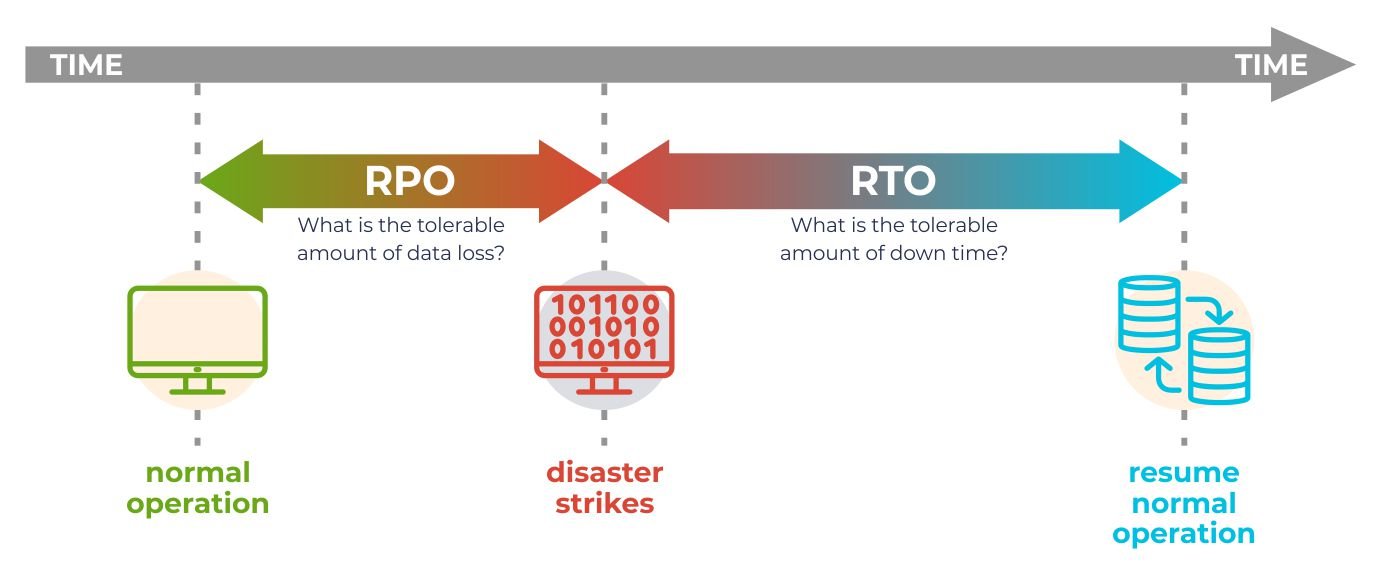Understanding RPO and RTO in Disaster Recovery
 Cloud Tuned
Cloud Tuned
Understanding RPO and RTO in Disaster Recovery
Recovery Point Objective (RPO) and Recovery Time Objective (RTO) are critical metrics in disaster recovery planning that define the maximum acceptable data loss and downtime respectively. In this article, we'll explore the concepts of RPO and RTO, their significance in disaster recovery planning, and how organizations can leverage them to ensure business continuity.
What are RPO and RTO?
Recovery Point Objective (RPO): RPO refers to the maximum tolerable amount of data loss that an organization is willing to accept in the event of a disaster. It represents the point in time to which data must be recovered to resume normal operations without significant impact on business continuity.
Recovery Time Objective (RTO): RTO, on the other hand, defines the maximum tolerable downtime that an organization can afford in the event of a disaster. It represents the time it takes for systems, applications, and services to be restored to a functional state after a disruption occurs.
Significance of RPO and RTO
RPO and RTO play a crucial role in disaster recovery planning for several reasons:
Risk Assessment: RPO and RTO help organizations assess the potential impact of disasters on their operations and prioritize resources and investments accordingly.
Service Level Agreements (SLAs): RPO and RTO metrics are often included in service level agreements between organizations and their service providers to ensure compliance and accountability.
Resource Allocation: RPO and RTO metrics inform decisions about resource allocation, technology investments, and infrastructure design to meet business requirements and minimize downtime and data loss.
Setting RPO and RTO Targets
Setting appropriate RPO and RTO targets requires careful consideration of business needs, regulatory requirements, and risk tolerance. Factors to consider include:
Data Criticality: Identify critical data and applications that require near-zero data loss and minimal downtime for operations.
Budget and Resources: Assess available resources, budget constraints, and technological capabilities to determine feasible RPO and RTO targets.
Compliance Requirements: Consider industry regulations, compliance standards, and contractual obligations when setting RPO and RTO targets.
Conclusion
RPO and RTO are critical metrics in disaster recovery planning that define the maximum acceptable data loss and downtime for an organization. By understanding and properly defining RPO and RTO targets, organizations can develop effective disaster recovery strategies, allocate resources efficiently, and ensure business continuity in the face of unforeseen events.
Are you interested in learning more about RPO, RTO, and disaster recovery planning? Share your thoughts and questions in the comments below! Don't forget to subscribe to our blog newsletter for more insightful content on IT resilience, cybersecurity, and business continuity.
Ensure the resilience of your organization with well-defined RPO and RTO targets and robust disaster recovery strategies! 🛡️⏱️
Subscribe to my newsletter
Read articles from Cloud Tuned directly inside your inbox. Subscribe to the newsletter, and don't miss out.
Written by
